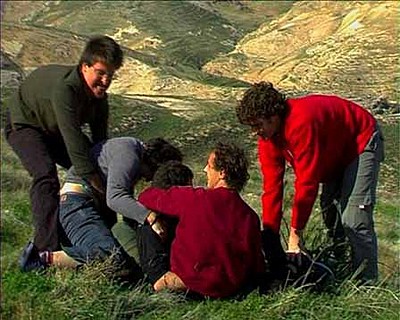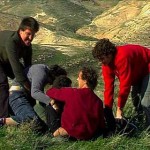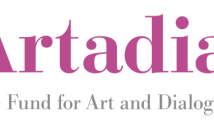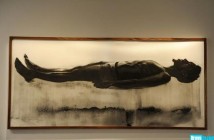ACTING OUT: SOCIAL EXPERIMENTS IN VIDEO @ THE ICA
There is a trend in contemporary video art to include so-called “real people” or non-actors. I like to think about this shift in two ways. First of all it is a desire to connect a concept with the “real.” And by this I mean not only in the Baudrillard-ian sense but also in the very fact of the realness of people who are not connected with the contemporary art world (which has the curious implication of people involved in the art world not being real which is a thought I find very amusing). And second, I see this as a natural expansion of our current cultural predilection for reality in a televised manner, i.e. reality TV. The fact is that over fifty years of television and televisual interaction we are still in a conflicted relationship with the medium. What does it mean to be recorded by video? What does the moving image do to one’s identity? And how can artists extract meaning from this? The current show “Acting Out: Social Experiments in Video” doesn’t seek to explicate such deep questions. But it does offer up an opportunity to examine how five artists are mining these concepts.
Each of the artists approaches the “social experiment” differently. One of the strongest, and not surprising considering he has been using these methodologies for some time, is Phil Collins. In the piece here, He Who Laughs Last Laughs Longest from 2006, he has recorded a laughing contest that is taking place in a small Scottish town that is the birthplace of the inventor of television. The piece is seven long minutes of almost excruciating footage of people forcing themselves to laugh. After several moments what had initially seemed amusing becomes a torturous exercise in watching televised contestants work themselves into a laughing frenzy. One by one they leave the stage exhausted and defeated until only one remains. It is interesting to watch the way in which the act of laughter, presumably a spontaneous, physical action, is visually transformed into an appearance of pain and trauma. The contestant no longer look like they are enjoying themselves and we the viewer become aware of the truly physical nature of laughing. Collins’ piece lays bare the brutal nature of televised contests often hidden by slick editing and expensive production values.
Johanna Billing’s video I found somewhat less interesting. Her video, Magical World from 2005, involves a group of Croatian children singing the song “Magical World.” They struggle with the English lyrics as the song is endlessly repeated. It is somewhat engaging but didn’t really pull me in. Yael Bartana’s video was another one that sounded interesting conceptually but when viewed lost some strength. The concept, people acting out the struggle between settlers and police in the occupied territories of Israel, was intriguing but its execution was a bit didactic. One wall was occupied by a large projection of the video image and next to it was a projection of the translation of the dialogue. Perhaps it was the way in which the projections were installed or perhaps the informality of the space (there were several pillows spread about the floor to encourage lounging) but I didn’t really feel that power of the piece. It is such a complicated narrative (in real life – outside the gallery) and I understand how difficult it must be to navigate it but unfortunately it just didn’t work. It seemed to scream to me “sit here and learn something.”
Another piece that I felt was interesting and yet extremely problematic was Javier Tellez’ Letter on the Blind, for the Use of Those Who See (2007). Inspired by the Indian parable “Six Blind Men and the Elephant” the video involves pretty much just that: six blind men approach and interact with an elephant in an open space. While it was fascinating to watch (and perhaps the busiest of the video rooms) and beautifully filmed there were times when I felt that this was simply another example of putting the disabled on display. Friends of mine, who happen to be blind and very familiar with the parable, felt that Tellez just didn’t get it. While his bio tells of his frequent collaboration with mentally and physically challenged it seems to me that this piece rang as less of a collaboration than an investigation into a moment. The blind men are seated in an open space (hard to tell just where they are but it seems to be an urban environment) and they walk about 20 feet or so towards the elephant. Each of them has a very different reaction to it. One man caresses and talks soothingly while another is far more tentative and has difficulty coming to terms with the animal. I guess my issue stems from the fact that this interaction presumes a great deal about the men who are interacting with the elephant. I don’t get the sense that Tellez is using them. But there is something about the piece that leaves me feeling that they are being put on display and acting out pre-conceived notions of disability. They act the way culture expects blind people to act. It presumes that there is a disconnect for these men about space and that they are (incapable is too strong but) unable to conceive of the animals position in it. My blind friends tell me this is far from the case (at least for them). I haven’t actually resolved my issues with this installation and think that I need to revisit it. So I am offering up a not quite complete critique. I think the piece needs to be thought through.
The overall installation of the exhibition is quite well done. Four of the videos are given their own spaces which allows for some quiet interaction. As in all video shows there is some sound bleed from piece to piece but the ICA has done a good job minimizing this. There is one video projected in the main space of the show. Artur Zmijewski’s Them(Sie) is projected on a large wall at one end of the gallery space. His piece is interesting in that it is the documentation of a very real social experiment. Zmijewski brought together Polish Nationalists, conservative Catholics, Jewish activists and social leftists to his studio and had them create and desecrate each others symbols of belief. It is wildly chaotic and pretty fascinating to watch. I had the strong temptation to attempt this here in America.
Ultimately “Acting Out: Social Experiments in Video” is worth a visit. It raises some interesting questions about social interactions more so in a televisual sense that in a documentarian sense. The main issue being that none of these pieces escaped their nature as videos. I rarely got the sense that these were simply social actions and the artist simply stood and documented. They are inescapably integrated into their mediums. The exhibitions tagline states that the artists captured impromptu actions of ordinary people yet in our culture how can this be? We all know what it means to be televised. We all know that the camera makes people act differently. In today’s culture of the omnipresent camera (and its reality TV equivalent) this tagline is at best a naive one. I think a better question to ask is in today’s world can we even be impromptu when there is a camera present?
- Yael Bartana, Wild Seeds, video still, 2005.
- Phil Collins, he who laughs last laughs longest, video still, 2006
- Javier Téllez, Letter on the Blind, for the Use of Those Who See, video still, 2007
"Acting Out: Social Experiments in Video" is on view March 18 - October 18, 2009 at the ICA.
All images are courtesy of the artist and the ICA.







